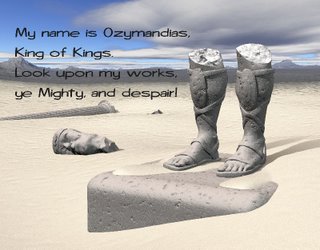“Endymion”, in many ways signifies a romantic culmination of Keats’s firm belief in the immutability of beauty, and of its claim to a legitimacy vis-à-vis its permanence, and its ability to conjure, or “contextualize” the truth. The poet’s aesthetic view of beauty as an intransient source of pleasure and joy comes in the face of a cognizance of the trenchant tribulations of life, to which the “(quintessential) thing of beauty” offer their own mode of resistance. Unlike the commonplace objects of everyday reality, the objects of beauty are immune to the perishability of time, and indeed of mortality, which entwines the melancholic note characteristic to many of the poet’s odes with a classical, fleeting form of beauty. Their power grows with time.
They are the signifiers of a continuity that is mirrored as historical truth, of a saga that transcends the restrictions of individual perception, but includes and adjudicates the collective flow. The sun, the moon, the flora and the fauna in Nature are defenders of an eternity that can never be equated with the temporariness and incontingency of human schemes.
The first verse-stanza ends on the note of death and the grandiloquent structures of feeling or myth that we have devised to accord the dead with the reverence it deserves, or demands. Death is the sentient presence which drowns their immortalities, the great weightage of the past and its remoteness, and in Keats’s poem, death serves as the omnipotent counterpart to the vitality and spontaneity of impulse so intrinsic to his romantic sensuousness and vividness. The mighty and dead who rose to positions of prominence in their own respective lifespans are expected to be met with greater rewards on Doomsday.
But, such tales and fabrications fade in comparison to the tales that speak of Nature’s beauty, which the narrator compares to sprouts of heavenly fountain. When inspired by Nature, we partake of the immortal drink of the Gods from the endless fountain of heaven and attain Immortality. Natural beauty can serve as endless source of inspirations for the world-weary, for the nerves frayed by gloom and human degeneration. The bond between Nature and man, who tries to master the former, is more organic than what we might imagine, and acts as a moral teacher of sorts, guiding our principles and actions through the turbulent current, enabling us to introspect on our wayward and evil ways. The daffodils are a welcomed sight among the green thickets, and small streams are nestled in and around forests that flourish around them.
It is the perception of the viewing subject, of the critical mind which is responsible for his own well-being, and which should ideally aim at a balanced synthesis of his own egotistic inclinations with the bestowed borrowings and emotional sustenance of beauty. Endymion, the mythical character, represents such a desire for a romantic self-transcendence that aims at fusing his own self with the plethora of cosmic creations. This is a personal unity which is more intricate than the Wordsworthian notion of “Pantheism”. The awakened state of mind that turns its own subjectivity onto the gaze of nature manifests the notion of “negative capability” as propounded by the scholar-poet.
In Greek mythology, Endymion is a shepherd beloved by the moon-Goddess Selene. We see an elaboration of the original story at this point in the poem, with the moon-Goddess Selene being renamed as “Cynthia”. “Endymion” narrates the story of a handsome youth who spent much of his life sleeping. He has been interpreted by certain stream of tradition as having been the king of Elis, or alternatively, as having been offered by Zeus to choose anything he might desire and the protagonist choosing everlasting sleep to preserve his beauty..
In another version of the myth, Endymion’s eternal sleep has been depicted as a punishment given by Zeus on learning that the former had fallen in love with Zeus’s wife, Hera. Some scholars have opined that it was Selene who had cursed Endymion into permanent sleep so that she could have enjoyed him all by herself in the night when she used to visit her beloved. But in the poem, Keats emphasizes on Endymion’s love for Diana rather than on hers for him. His rendition of the well-known tale is based around wanting to depict love that has been felt on imaginative longings.
This theme of love which is determined in the adventure of the Endymion quest by Diana, is touched upon by the poet in his allusions to scenes of rural women bringing back palls of milk, and willow trees, and of venturing through the waters on a boat. That is the journey that must be undertaken by every individual in order to gain full comprehension of his functions within the larger microcosm of the world. He conjectures he would probably be composing verse in that critical juncture, and be surrounded by the lush proffering of a bountiful autumn as opposed to the scarcities of the barren winter. The poem ends on a languorous note of imaginative wish-fulfillment of sorts, where he envisions his thoughts unweaving strands of verdancy in front of his “inner eye”, leading to a place of consummation.
Beauty, or the aesthetic component, conduces not just imaginative efflorescence and a creative surge in the mind of the poet weaving reality into multifarious, complex strands, but also brings him to the realization of the indispensability of the “artificial”, the “constructed” amid the rigorous bounds of reality.
Keats was to eventually die, from unsympathising critics who thrashed his work with veracity in a number of literary publications of the day. But he forged, as in this poem, an imaginative codum for “the beautiful”, which could also be passed down from him to any discerning mind, trying to shield itself from the relentless blows of the world. The image of Endymion, like the Grecian Urn, stands as an iconic testament to the resilience of the human imagination, of art that has survived through centuries of change, still to get at something fundamental about the truth of pain, frailty, death, erosion and loss.
Dear Readers- If this summary/analysis has helped you, kindly take a little effort to like or +1 this post or both. Make sure you like Beamingnotes Facebook page and subscribe to our newsletter so that we can keep in touch. We’ll keep informing you about stuffs that are really interesting, worth knowing and adds importance to you.
Some online learning platforms provide certifications, while others are designed to simply grow your skills in your personal and professional life. Including Masterclass and Coursera, here are our recommendations for the best online learning platforms you can sign up for today.
The 7 Best Online Learning Platforms of 2022
- Best Overall: Coursera
- Best for Niche Topics: Udemy
- Best for Creative Fields: Skillshare
- Best for Celebrity Lessons: MasterClass
- Best for STEM: EdX
- Best for Career Building: Udacity
- Best for Data Learning: Pluralsight

















Good summary. I like it. Shyam Reddy, Director, readwritelistenspeak.com
Thanks
I liked it
best summary .thanks